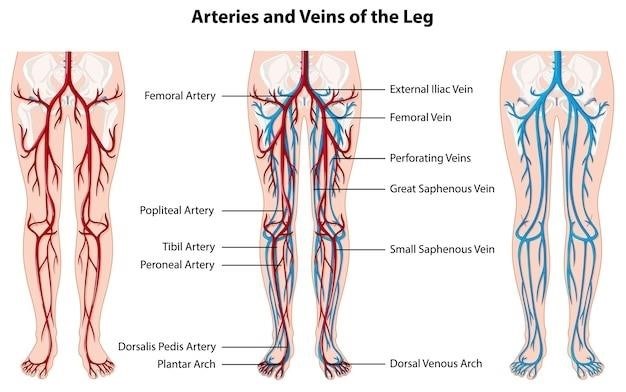Eduardo Galeano’s “Open Veins of Latin America”⁚ A Critical Overview
Galeano’s “Open Veins of Latin America” offers a potent critique of Latin American history‚ exposing centuries of exploitation and the enduring legacy of colonialism. Available in various editions and translations‚ including readily accessible PDF formats‚ it remains a seminal work.
Historical Context of the Book’s Publication
Published in 1971‚ Eduardo Galeano’s “Open Veins of Latin America” emerged during a period of significant political and social upheaval in Latin America. The 1960s and early 1970s witnessed the rise of leftist movements‚ guerrilla warfare‚ and military dictatorships across the continent. The Cold War’s shadow loomed large‚ with the United States heavily involved in the region’s political affairs through interventions and support for authoritarian regimes. Galeano’s book‚ therefore‚ appeared at a moment when critical analysis of Latin America’s historical trajectory and its relationship with global power structures was particularly urgent and politically charged. The context of its publication is crucial to understanding its impact and reception. Many Latin American nations were grappling with neocolonial influences and struggling for economic independence. This volatile atmosphere fueled intense debate surrounding the book‚ contributing to its censorship and widespread circulation simultaneously. The book’s publication resonated deeply with those who sought to understand the continent’s complex history of exploitation.
The Book’s Central Argument⁚ A History of Exploitation
Galeano’s central argument in “Open Veins of Latin America” is a scathing indictment of the systematic exploitation of Latin America from the time of the Spanish conquest to the late 20th century. He meticulously traces how European colonialism‚ and subsequently neocolonial practices by global powers‚ have drained the continent of its resources and wealth‚ enriching the colonizers while leaving Latin America impoverished and dependent. The book doesn’t shy away from detailing the brutal realities of slavery‚ the extraction of natural resources‚ and the imposition of unfair trade agreements. Galeano’s narrative reveals a pattern of systemic plunder‚ arguing that Latin America’s underdevelopment is not accidental but rather a direct consequence of this prolonged exploitation. He emphasizes how this historical pattern continues to shape contemporary socio-economic inequalities‚ perpetuating cycles of poverty and dependency. This powerful analysis provided a new framework for understanding Latin American history‚ challenging conventional narratives that often minimized or ignored the lasting effects of colonialism. The book’s impact lies in its unflinching portrayal of this exploitative relationship‚ which continues to resonate with readers today.
Galeano’s Literary Style and Narrative Techniques
Eduardo Galeano’s “Open Veins of Latin America” distinguishes itself not only for its historical analysis but also for its unique literary style. He masterfully blends historical analysis with narrative storytelling‚ employing a captivating and accessible prose that avoids dry academic language. The book reads as much like a compelling narrative as a scholarly work‚ drawing readers into the historical events and personal stories it recounts. Galeano uses vivid imagery and evocative descriptions‚ painting a picture of the continent’s history that is both informative and emotionally resonant. He skillfully interweaves seemingly disparate elements – historical data‚ personal anecdotes‚ poetic reflections – creating a rich and multi-layered tapestry. This literary approach makes complex historical processes comprehensible and engaging‚ transcending the limitations of conventional historical writing. The result is a powerful and memorable text that has had a profound influence on how Latin American history is understood and discussed. His style is both accessible and insightful‚ making the book’s message readily understandable to a broad audience.

Key Themes Explored in “Open Veins of Latin America”
Galeano’s work profoundly explores the enduring impacts of colonialism‚ neocolonialism‚ and the ongoing struggle for economic independence and social justice in Latin America.
Colonialism and its Lasting Impact on Latin America
Eduardo Galeano’s “Open Veins of Latin America” meticulously details the devastating consequences of European colonialism on the continent. The book vividly portrays how the conquest initiated a brutal system of exploitation‚ forcibly extracting resources and wealth for the benefit of European powers. This extraction wasn’t merely economic; it fundamentally reshaped social structures‚ imposing hierarchical systems that perpetuated inequality and subjugation. Galeano argues that the colonial legacy extends far beyond the formal end of colonial rule‚ shaping contemporary political and economic realities. The deep-seated inequalities‚ economic dependencies‚ and social hierarchies prevalent in many Latin American nations today are directly linked‚ according to Galeano‚ to the enduring wounds inflicted by centuries of colonial domination. The book underscores the importance of understanding this historical context to fully grasp the complexities of present-day Latin America. This understanding‚ the author implies‚ is crucial for fostering genuine progress and social justice.
Neocolonialism and the Role of Foreign Powers
Galeano’s “Open Veins of Latin America” doesn’t merely chronicle the historical impacts of colonialism; it also examines the insidious continuation of exploitative practices under the guise of “neocolonialism.” The book analyzes how powerful nations‚ particularly the United States‚ exerted considerable influence over Latin American economies and politics long after formal independence was achieved. This influence often manifested through economic policies that favored foreign interests at the expense of local development‚ creating a cycle of dependency and underdevelopment. Galeano highlights how multinational corporations and international financial institutions played a significant role in perpetuating this neocolonial dynamic‚ further hindering Latin America’s ability to achieve genuine self-determination; The text argues that understanding these neocolonial dynamics is essential to comprehending the persistent challenges facing the region in its pursuit of economic sovereignty and social justice. These continued external pressures‚ the author suggests‚ hinder the region’s ability to fully escape the legacy of historical exploitation.
The Struggle for Economic Independence and Social Justice
A central theme in Galeano’s “Open Veins of Latin America” is the ongoing struggle of Latin American nations to achieve genuine economic independence and social justice. The book details how historical patterns of exploitation have contributed to profound economic inequalities and social injustices within the region. Galeano illustrates how the pursuit of economic independence has been consistently hampered by external pressures and internal power structures that perpetuate dependency. The text highlights the efforts of various social movements and political actors to challenge these systems‚ advocating for fairer distribution of wealth and resources. It emphasizes the interconnectedness of economic liberation and social justice‚ arguing that genuine progress requires addressing both issues simultaneously. The book doesn’t offer simplistic solutions but rather provides a nuanced understanding of the complexities involved in the struggle for a more equitable and just society; This continuous fight‚ according to Galeano‚ remains a defining feature of Latin American history and its ongoing evolution.
The Reception and Legacy of “Open Veins of Latin America”
Galeano’s work faced censorship and suppression but profoundly impacted Latin American thought and politics‚ remaining highly relevant in contemporary discussions about neocolonialism and economic justice.
Censorship and Suppression of the Book
Published in 1971‚ “Las venas abiertas de América Latina” immediately became a target for censorship in several Latin American countries. Its unflinching critique of historical exploitation and the role of foreign powers in shaping the region’s economic and political landscape made it a dangerous text for authoritarian regimes. The book’s popularity and its powerful message of economic injustice threatened the established order‚ leading to bans and suppression in various countries. The very act of circulating and reading the book became a form of political resistance. The book’s subversive nature resonated deeply with readers‚ leading to its clandestine circulation and translation into numerous languages‚ ensuring its survival despite attempts to silence it. The digital age further aided in its dissemination‚ with PDF versions readily available online‚ defying geographical and political boundaries. This widespread availability highlights the book’s enduring power and the inability of censorship to fully suppress its message.
The Book’s Influence on Latin American Thought and Politics
Eduardo Galeano’s “Open Veins of Latin America” has profoundly impacted Latin American thought and political discourse. Its accessible style and powerful narrative have made it a cornerstone text for understanding the region’s history‚ influencing generations of activists‚ scholars‚ and policymakers. The book’s analysis of neocolonialism and economic dependency continues to resonate‚ shaping debates on development‚ globalization‚ and social justice. It has served as a catalyst for critical examinations of national identities and the enduring effects of historical injustices. Many movements for social change and economic independence have drawn inspiration from its insights‚ highlighting the ongoing relevance of its central arguments. Its impact extends beyond academic circles‚ informing public discourse and shaping political activism across the region‚ solidifying its status as a landmark work of Latin American thought.
Enduring Relevance in Contemporary Discussions
Despite being published in 1971‚ “Open Veins of Latin America” maintains striking relevance in contemporary discussions. Galeano’s analysis of economic exploitation and foreign interference continues to resonate in light of ongoing challenges faced by Latin American nations. The book’s examination of historical patterns of dependency offers crucial context for understanding current economic inequalities and political instability. Issues such as resource extraction‚ foreign debt‚ and the influence of multinational corporations‚ all central to Galeano’s narrative‚ remain potent concerns. The book’s critique of neoliberal policies and their impact on marginalized communities provides a framework for analyzing contemporary socio-economic disparities. Its exploration of the relationship between history and the present offers valuable insights into the complexities of Latin American development and the persistence of systemic inequalities. The enduring power of Galeano’s work lies in its ability to illuminate contemporary struggles through the lens of historical analysis.

Accessing “Open Veins of Latin America”
Numerous online sources offer “Open Veins of Latin America” as a PDF download. Diverse editions and translations are available through libraries and online booksellers‚ ensuring broad accessibility.
Availability of the Book in PDF Format
Finding Eduardo Galeano’s “Open Veins of Latin America” in PDF format is relatively straightforward. Many online sources‚ including digital libraries and file-sharing platforms‚ host the book in various translations. However‚ the legality and copyright status of these PDFs vary considerably. Some are offered as free downloads from open-access repositories‚ while others may be uploaded without the author’s or publisher’s permission‚ potentially violating copyright laws. It’s crucial to exercise caution and only utilize PDFs from reputable sources to ensure ethical and legal access. Be sure to check the license information before downloading any PDF to avoid copyright infringement. Remember that respecting intellectual property rights is essential. While free PDFs can be easily found online‚ purchasing a legal copy contributes directly to the author’s legacy and supports future literary works.
Different Editions and Translations of the Book
Eduardo Galeano’s “Open Veins of Latin America” enjoys a rich history of publication‚ existing in numerous editions and translations. The original Spanish version‚ “Las venas abiertas de América Latina‚” has seen multiple print runs since its initial release‚ reflecting its enduring popularity and significance. Translations into English and other languages have broadened its accessibility to global audiences‚ fostering international dialogue on the themes of colonialism‚ neocolonialism‚ and economic injustice. These translations‚ however‚ may vary slightly in their rendering of certain nuances‚ reflecting the challenges of translating culturally specific contexts. Readers can choose from different publishers and editions‚ each potentially offering unique features like introductory essays‚ annotations‚ or updated historical context. The availability of different formats‚ including print‚ ebook‚ and potentially even audiobook versions‚ allows for diverse reading preferences.
Finding the Book in Libraries and Online Retailers
Securing a copy of Eduardo Galeano’s “Open Veins of Latin America” is relatively straightforward‚ thanks to its enduring popularity and widespread availability. Many public and university libraries worldwide hold copies in their collections‚ both in print and potentially in digital formats. Searching library catalogs online provides a convenient way to locate nearby copies. Moreover‚ numerous online retailers‚ such as Amazon‚ Barnes & Noble‚ and independent bookstores‚ offer new and used copies for sale‚ often in various editions and languages; The prevalence of ebooks has further increased accessibility; digital versions are commonly available for purchase or download‚ offering convenient access through e-readers and tablets. For those seeking free access‚ searching online archives or utilizing open-access initiatives might yield results‚ though availability can be inconsistent. The book’s prominence ensures that finding a copy‚ whether physical or digital‚ is generally feasible for interested readers.

